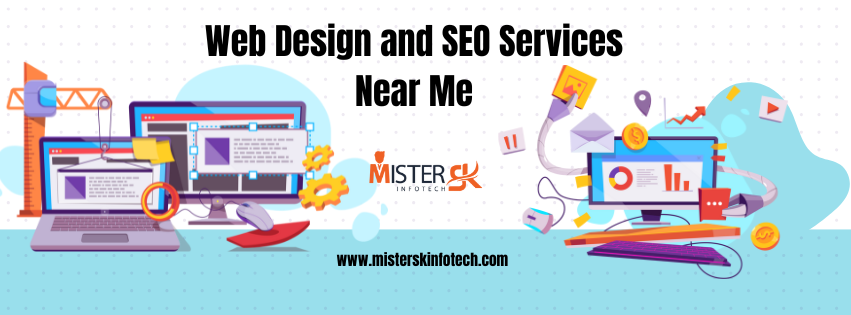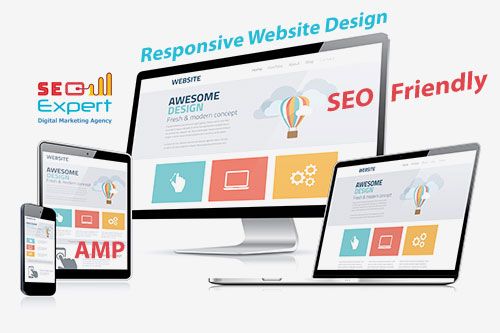Learn Just How Web Style Works to Produce Involving Customer Experiences
Internet design plays an essential role fit user experiences across electronic systems. By understanding essential concepts like use and visual hierarchy, developers can develop internet sites that not just draw in site visitors however also motivate them to involve. Efficient formats and well-thought-out color schemes can greatly affect individual habits. There are much deeper considerations that go past aesthetic appeals, which are crucial for promoting a comprehensive on the internet environment. What are these elements that can change an easy web site right into a compelling experience?
Understanding the Principles of Web Style
The foundation of efficient web style hinges on a set of core concepts that direct the creation of involving user experiences. These concepts include functionality, access, and visual hierarchy, each playing an essential role in how customers communicate with an internet site. Usability ensures that individuals can browse intuitively, discovering details easily. Availability broadens the reach of an internet site, fitting users with diverse needs and capabilities. Visual power structure routes customers' interest to crucial elements, helping with easier comprehension of web content. Furthermore, consistency in style elements cultivates knowledge, improving customer comfort. Color pattern and typography need to complement the general aesthetic while maintaining readability. Responsive layout adapts to numerous devices, guaranteeing a seamless experience throughout platforms. By adhering to these principles, developers develop sites that not just astound users however also lead them toward wanted actions, eventually improving interaction and fulfillment.
The Value of Design in Customer Experience
Efficient design serves as a foundation for user experience, affecting exactly how visitors perceive and communicate with a site. A well-structured design guides customers' interest, making it much easier for them to browse and find pertinent details. By organizing content realistically, designers can produce a smooth flow that decreases cognitive lots, allowing customers to concentrate on their tasks.

Furthermore, receptive formats ensure that web sites operate well across various gadgets, preserving usability despite screen size. Eventually, a thoughtful design is vital in creating an appealing individual experience that cultivates complete satisfaction, motivates expedition, and enhances the probability of conversions. Attention to format design is necessary for successful internet communications and general individual involvement.
Color Schemes and Their Influence On Involvement
How do color plans affect individual interaction on internet sites? Color design play a necessary role in forming individual perception and behavior. They evoke emotions and can substantially impact how customers communicate with a website. Cozy shades like red and orange can stimulate enthusiasm and necessity, while cooler tones like blue and environment-friendly often share calmness and trust fund. - Kelowna Website Development
Communicate Additionally, consistency in shade usage cultivates brand name acknowledgment, making customers a lot more likely to engage with acquainted visuals. Efficient shade contrast improves readability, making certain customers can easily browse web content without stress. Furthermore, the emotional associations of colors can direct customers towards preferred activities, such as clicking a call-to-action switch.
Inevitably, a thoughtfully chosen color design can not just bring in customers however additionally navigate to these guys improve their total experience, causing greater involvement prices and boosted contentment. Therefore, web developers must carefully think about shade choices to maximize user interaction and promote a favorable environment.
Navigation Ideal Practices for User-Friendly Websites
What makes navigating straightforward and instinctive on a website? Effective navigating depends on clear framework and logical pecking order. Individuals must conveniently locate food selections, usually positioned on top or side of the web page, enabling quick accessibility to important areas. Consistency in layout aspects-- such as font styles, colors, and button styles-- helps with experience, enhancing user comfort. Detailed tags for navigation web links are crucial; they need to precisely represent the web content customers can expect when clicked.
Additionally, incorporating a search function can aid customers in locating certain details quickly. Dropdown menus can arrange subcategories without overwhelming visitors, while breadcrumb routes aid customers track their place within the website. Mobile optimization is likewise essential, as touch interfaces demand bigger buttons and receptive layouts. Eventually, prioritizing simpleness and clarity in navigating enables users to engage a lot more effectively with the website, cultivating a positive customer experience.
Guaranteeing Accessibility for All Customers
Guaranteeing availability for all users is vital in web design, as about 15% of the global populace lives with some type of special needs. Internet developers must focus on inclusivity by adhering to developed guidelines like the Internet Web Content Access Standards (WCAG) These standards supply necessary requirements that improve usability for individuals with aesthetic, acoustic, electric motor, and cognitive problems.
Secret methods consist of utilizing descriptive alt text for images, guaranteeing enough color contrast, and supplying keyboard navigability. Additionally, executing screen visitor compatibility can substantially improve the experience for visually impaired individuals.
Testing web sites with diverse individual groups, including those with handicaps, can expose prospective obstacles and notify necessary changes. Informing style teams concerning ease of access can cultivate a society of inclusivity, eventually producing a more engaging and straightforward web experience. By prioritizing access, designers not only broaden their target market however likewise demonstrate social duty and commitment to equivalent accessibility for all.
Frequently Asked Concerns
What Equipment Can I Use to Layout My Web site?
To make a site, one can make use of tools like Adobe XD, Figma, Sketch, and WordPress. These systems provide various features for format, prototyping, and content management, helping with the production of aesthetically enticing and useful websites.
How Can I Evaluate My Website's User Experience?
To check a site's customer experience, one can use tools like Google Analytics for behavior tracking, conduct functionality screening with genuine customers, and gather feedback through surveys to determine areas for improvement and read this enhance general interaction.
What Are Typical Mistakes in Website Design to Stay Clear Of?
Typical blunders in web layout include cluttered formats, bad navigation, lack of mobile optimization, slow-moving loading times, and making use of also numerous fonts or colors. These issues can hinder customer experience and reduce overall site performance.
Just how Frequently Should I Update My Website's Design?
A site's design must be upgraded every one to three years, or extra regularly if considerable fads emerge or individual feedback shows frustration. Normal updates improve looks and performance, making certain a appealing and fresh user experience.
Can I Discover Website Design Without Coding Knowledge?
Yes, one can learn website design without coding expertise. Different devices and platforms permit individuals to create visually attractive sites with drag-and-drop user interfaces, making it possible for imagination without the complexities of programs languages.
